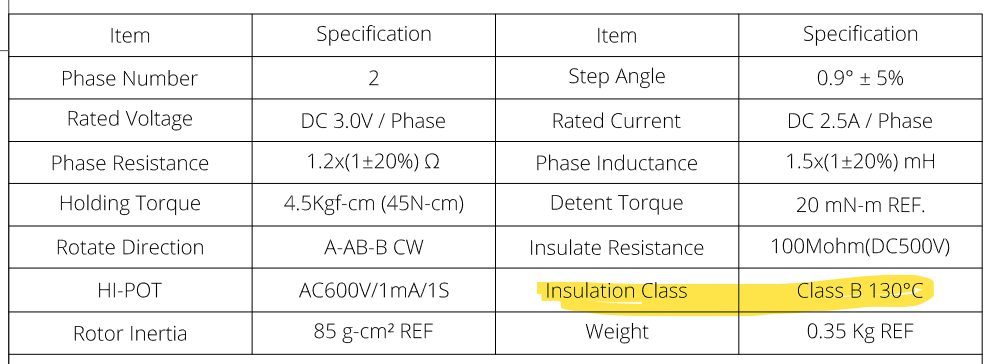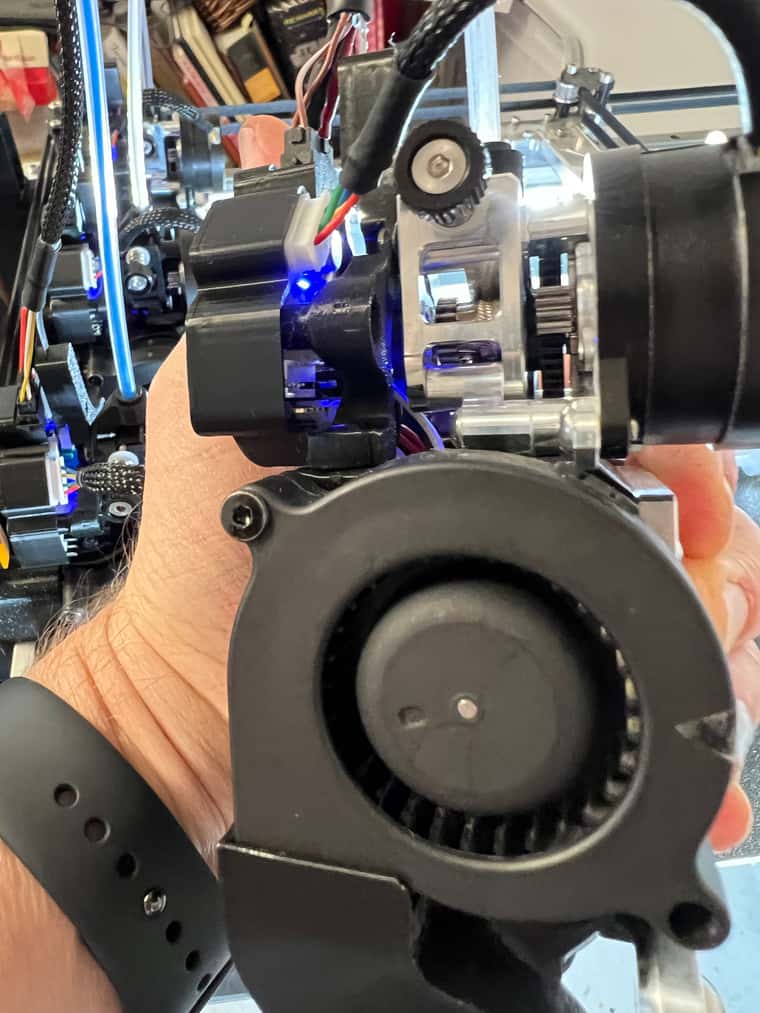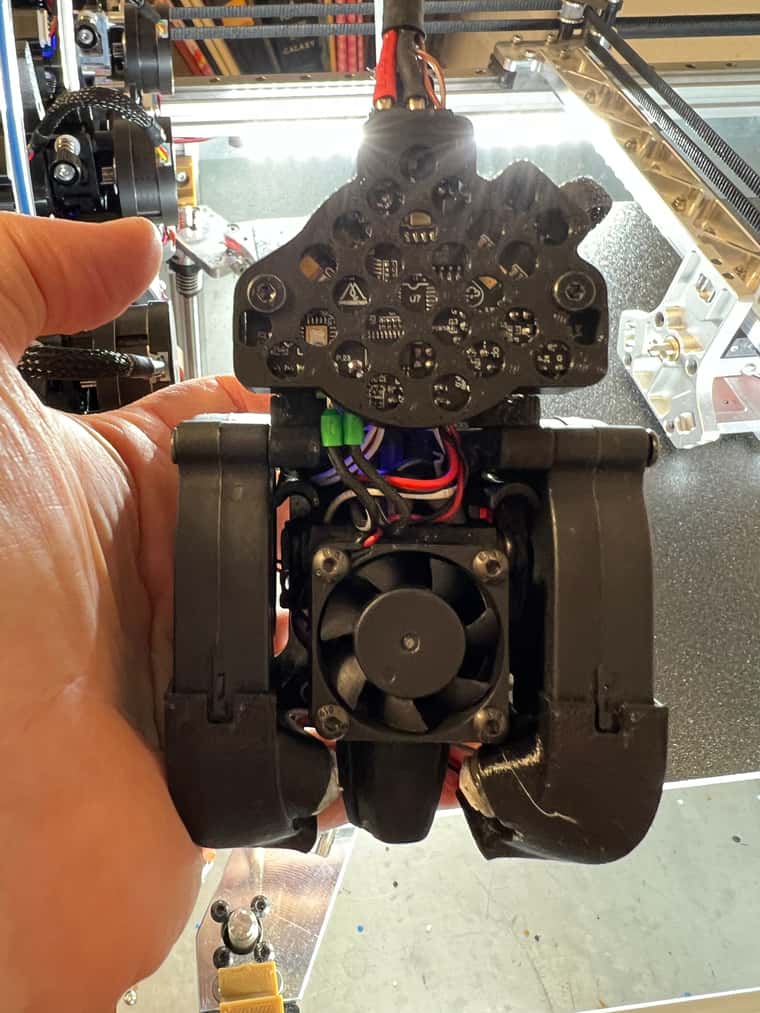Duet3D announces new tool board at FormNext
-
@fcwilt My Orbiter extruders have the same funny shape at the back thanks to their NEMA14 stepper so I am set. And it is amazing how you can hide the funny boards shape inside an enclosure so the one on the NEMA17 does not need a sheet thrown over it if companies is over.
-
-
I was just making a funny remark about the shape.
I assume it is shaped that way to fit something else.
So what is that "something else"?
Thanks.
Frederick
-
@fcwilt the RRF-36 is shaped to mount on the rear of a nema 14
-
@jay_s_uk said in Duet3D announces new tool board at FormNext:
@fcwilt the RRF-36 is shaped to mount on the rear of a nema 14
There must be more to that. A NEMA 14 is square. The RRF-36 is not.
Frederick
-
@fcwilt round nema 14's aren't square... https://www.omc-stepperonline.com/round-nema-14-bipolar-0-9deg-8ncm-11-33oz-in-0-65a-36x20mm-4-wires-14hr08-0654s
they're now also the most popular type of motor to use on an extruder -
-
@fcwilt Let me guess, back in math class you were the one to yell out Pie aint square, pie are round . Right?
-
@KenW
No, not that I recall.
It just seems to me that they made that shape to fit onto/into something else where that particular shape was well suited.
I doubt they picked that shape for artistic reasons.
Frederick
-
@fcwilt Southern humor does not translate well I take it. The complete version of that one is.
Pie aint square. pie are round, cornbread are square. -
@fcwilt I don't know what the design parameters of the board, but you can guess from these pictures:


It doesn't fit behind the motor, it fits on the side, but it is the same width and height as the motor and extruder. This picture makes it look big, but that's a NEMA 14 round stepper, it really is tiny and light, even compared to a Hemera. Connections are forward and back, rather than up or down, and the mounting is very specific to the Roto extruder (it has the same spaced mounting holes on the other side of the extruder). Connectors are the standard ones E3D fit to their heaters, fans and thermistors, so they just plug straight in. Only the CAN connector exits from the top. There's a hot end fan on the other side, and I don't know where a part fan would fit on. It looks like the board could have been square, but for the top mounting hole. Probably the first Duet board with rounded corners - someone asked at Formnext why we didn't put rounded edges on our boards, and I pointed them towards @T3P3Tony!Ian
-
@droftarts and the CAN connector is the same one that's been adopted by Mellow and BTT (XT30 2+2)
-
Well, looks like the roto is available for purchase through filastruder. Going to wait to purchase until the documentation is available.
-
Eh, I just found some basic documentation and max ambient printing temp is 40C. Think I'm going to have to pass on this extruder.
-
@Surgikill said in Duet3D announces new tool board at FormNext:
max ambient printing temp is 40C
Can you quote this or add a link for us?
I wonder if that's related to the 3d printed heatsink? Maybe it's thermal conductivity is too low.
Funny enough they dont conduct heat from the stepper, but added a thermal barrier between. -
@o_lampe must be this bit he's quoting
https://beta.e3d-online.com/pages/help-centre-roto#:~:text=Performance Characteristics,temperature%3A 40°C -
I've checked some papers and the conductivity of SLM printed aluminum-alloy is in the ballpark of conventional aluminum alloy material
Pure aluminium: 237 W/mK
SLM printed AlSi10Mg: 130-190 W/mK
Other Aluminium alloys vary from ~90-150 W/mKSo, if it's not the SLM-heatsink it must be poor design choices regarding airflow?
-
@o_lampe The max service operating temperature (not 100% sure what that means) for the motor is listed as only 50C so perhaps the max overall ambient temperature is related to that?
-
@o_lampe I guess the best thing to do is to ask e3d what the basis is for that 40C limit.
-
@jay_s_uk yes, that is where I got the info. I know in the interview they said this heatssink is the most efficienct they have ever designed, going as far to say they printed pla at 40c ambient temp. I'm not sure if this is why it's rated at 40c, or if it's the plastic planetary gears.
-
Based on how E3D rates things, 40C is the “PLA without jamming” temperature
-
@elmoret if that's the case then it's a different story, but if the motor is only rated to 50c then I don't see it going over that, which is still pretty low.
-
@edsped I've found even for one tool head, I'd trade the cost for the convenience of not having to run 19 conductors for each tool.
- heater: 2
- thermistor: 2
- fan: 3
- fan: 4
- stepper: 4
- filament sensor/(un)load trigger button: 4
-
Anybody have any idea why the motor on the roto is only rated for 50C? Looking at the 36mm LDO pancake stepper, it is rated at 180C. Not sure how accurate that is, but it is a gulf between the roto and the LDO, and they look like the same motor.
-
@Surgikill Most stepper motors used by 3D printing enthusiasts are built using 'Class B' insulation for the motor windings. For 'Class B', the max allowable winding insulation temperature is 130°C, which often yields a max motor ambient temperature of 40-50°C (not stepper casement temperature).
http://www.drivesandautomation.co.uk/useful-information/nema-insulation-classes/
Example motor with specs on insulation, thermal rise, etc
https://catalog.orientalmotor.com/item/2-phase-bipolar-stepper-motors/42mm-pkp-series-2-phase-bipolar-stepper-motors/pkp244d08a2Most of us skirt by this 'max temperature' limitation by running steppers at 85% or so of the rated current, that gives some margin for an elevated ambient temperature. Running with an ambient temperature higher than the spec'd motor ambient could result in reduce service life for the motor. Ends up most of us ignore what 'Class B' insulation means, or simply don't know (I have been ignoring it, been running ambients in the 60-70°C on my motors
 )
)Without looking at a datasheet... the roto motor likely has 'Class B' insulation.
Speaking of datasheets, a lot of steppers used in printers seen here don't go into the detail manufacturer's like Oriental Motor use on their datasheets (example snippet from a popular stepper seen here):

If you read the specs above, and don't further research what 'Class B' means, you might assume the motor running at 130°C is fine... and by running at 130°C, one might think thats the easily observable casement temperature (they do get hot!).
With extruder motors, its often recommended to run them at a significantly reduced current (at least when they were using smaller NEMA17 motors) for two reasons:
- The torque at full current was much greater than what was needed for extrusion force
- The casement thermal rise at full (or 85%) current could soften the filament, depending on how the filament drive was connected to the stepper)
Its possible that, while the roto motor uses 'Class B' insulation, it doesn't need to run at rated current, meaning theres higher margin for ambient temperature (maybe, a good amount of conjecture on my part of the requirements of the roto motor
 )
)As far as that LDO pancake stepper, LDO has been making a series of high temperature motors for the enthusiast community using higher rated winding insulation.

